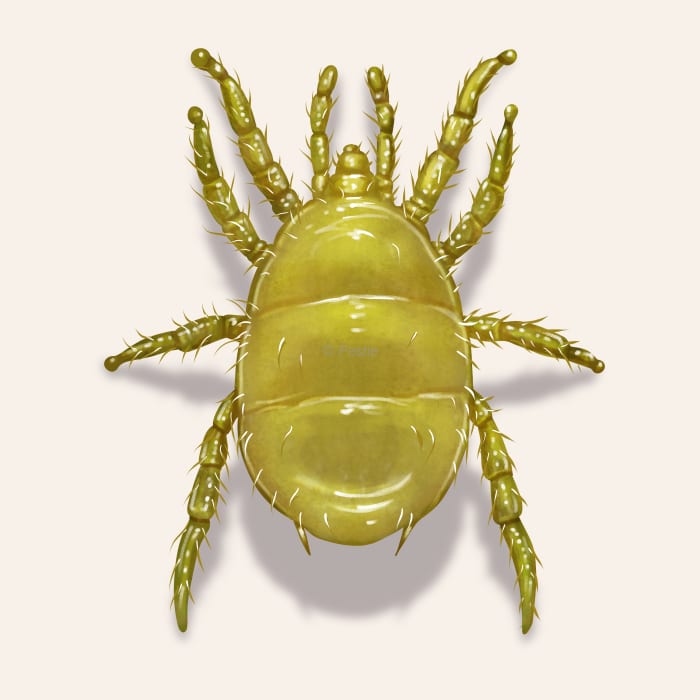How to identify and get rid of broad mites

Tiny pests, big problems: tackling broad mites in your garden!
Are your indoor and outdoor plants secretly under attack by tiny invaders? Broad mites could be the troublemakers that are wreaking havoc on your plants. These minuscule pests are often overlooked due to their size. Still, they can cause significant damage to indoor and outdoor plants alike. With a knack for thriving in warm, humid conditions, broad mites can turn vibrant green leaves into crinkled, discolored messes in no time.
These pests are sneaky; they hide on the undersides of leaves and in buds, making them hard to spot until the damage is done. They like to feed on a variety of plants, but it seems that peppers, tomatoes, eggplants, and cucumbers are their favorites in the greenhouse or garden. Some ornamentals can be a target, too.
How to identify broad mites
Broad mites are really hard to spot due to their tiny size and their transparent to pale brown color, which blends in with plant foliage. They are oval and somewhat shiny, which you’ll only really see if you are looking under a microscope. The symptoms can look very similar to viruses, including distorted and twisted new growth, bronzed or blistered leaves, and stunted growth. These pests are usually found on the undersides of leaves or in flower buds, hiding from plain sight.
How big are broad mites?
Broad mites are almost too small to see with the naked eye, around 0.2 mm similar to a dust mite.
Where do broad mites live?
You can find broad mites all over the US, especially in greenhouses or gardens. They like warm, humid environments and can be a problem for indoor plants.
How to get rid of broad mites
You can control broad mite infestations with a few simple strategies:
- Increase Air Circulation: Use fans in greenhouses or indoor growing areas to reduce the humidity. Broad mites need humidity to survive.
- Regular Inspection: Check plants frequently, especially new growth and undersides of leaves, for early signs of infestation.
- Isolate Infected Plants: Move infected plants to an isolated location so they don’t infect other plants.
- Physical Removal: Gently wipe leaves with a soft, damp cloth to physically remove mites or use water sprays to dislodge them from the plant.
Treat broad mites with Pestie
If you're still having trouble keeping broad mites away, the best option is to use a pro-grade, effective pest control solution like Pestie.
Pestie is a do-it-yourself pest control solution that's specially designed to keep broad mites and other pests away from your home.
With Pestie, you can rest easy knowing that your living space is protected and free of creepy crawlies. And the best part? It's designed for people, pets, and the planet, so you can say goodbye to harsh chemicals and hello to peace of mind!
- Save hundreds compared to traditional annual pest plans
- People, pet, and planet-friendly
- Pro-grade customized formulas
Quick facts
- Scientific name
Polyphagotarsonemus Latus
- Colors
Transparent
- Life span
5-13 days
- Diet
Vegetable and ornamental plants
How dangerous are Broad Mites?
Low danger risk
Broad mites aren’t dangerous to people, pets, or structures.
Females can lay 5 eggs a day but only live for a few weeks. Even so, populations can rapidly explode if left unchecked.








